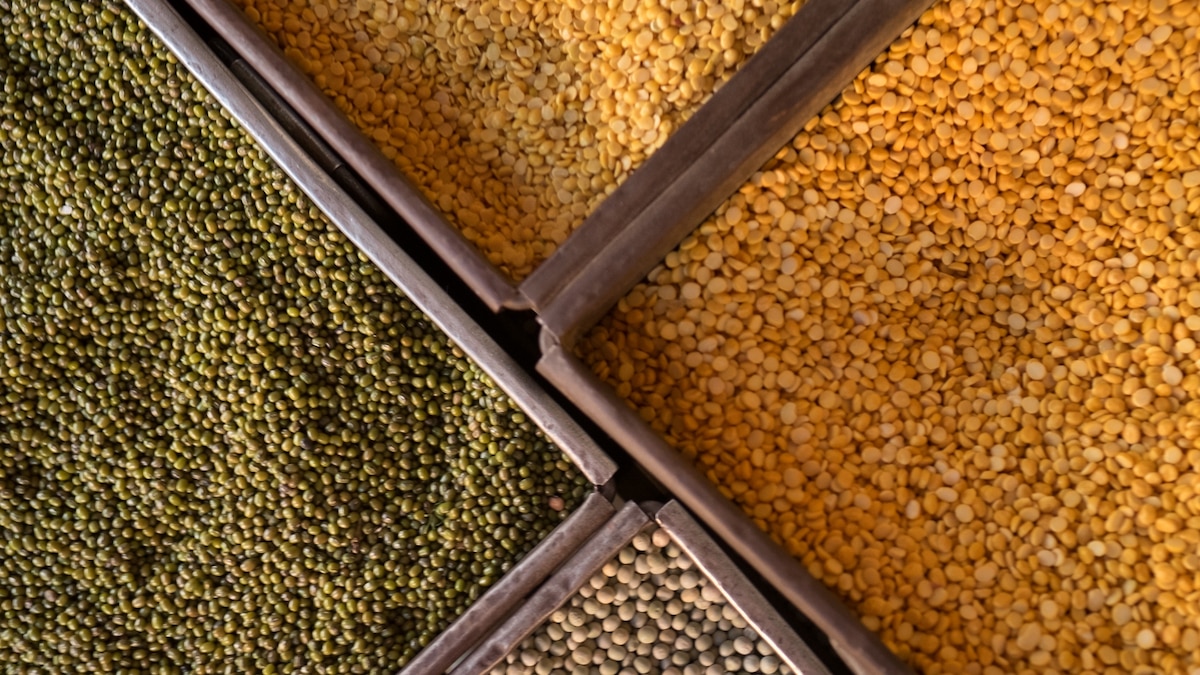Now Reading: Why you shouldn’t ignore lentils and peas—protein-packed superfoods
-
01
Why you shouldn’t ignore lentils and peas—protein-packed superfoods
Why you shouldn’t ignore lentils and peas—protein-packed superfoods

Beans hog the nutritional spotlight in the kitchen and on TikTok, but their fellow legumes lentils and peas pack high nutritional punches, too. These foods are so full of protein, fiber, and antioxidants that the American diet should be brimming with them, according to a recent report by the U.S. government’s 2025 Dietary Guidelines Advisory Committee.
Various legumes are staples in Indian, Middle Eastern, and other cuisines but rare in classic American fare. “It is embarrassing how few legumes people eat in the U.S.,” says Christopher Gardner, a nutrition scientist at Stanford University who helped author the new report. Even when people do eat them, he says, they lean towards the category’s most prominent member, beans.
(Black beans, pinto, and cannellini are also nutritionally rich.)
But some experts argue that lentils and peas deserve more of the limelight. In a 2022 review study, scientists at the University of Camerino in Italy termed lentils “one of the most important legumes.” That same year, the Physicians Committee for Responsible Medicine, a plant-food promoting medical group, called peas “the new power food.”
Here’s a look inside the plants’ nutritional and health benefits, how to handle them in the kitchen, and why they may be due for a rebrand.
Proteins, phytochemicals, and kidney protection

Beans, peas, and lentils are all members of the legume family.
Photograph by enviromantic, Getty Imagess
Peas and lentils may seem like unrelated foods, but, like other members of the legume family—which additionally include soybeans, chickpeas, and peanuts—their commonality has less to do with how we eat them than with how they botanically behave.
All legumes form a mutually beneficial relationship with bacteria in their roots that enable them to pull nitrogen from the atmosphere into the ground, fueling the growth of both these plants and future plantings.
Americans eat roughly five pounds of peas and lentils combined per person each year, according to the U.S. Department of Agriculture. That’s less than the 7.5 pounds of beans and a tiny fraction of the roughly 60 pounds each for chicken and beef.
Because of their high protein content, they could easily be swapped for many meat meals. A half cup of cooked lentils provides about 12 grams of protein—roughly a fifth of the total daily needs of a sedentary, middle-aged woman.
(Want a better high-protein diet? You don’t have to eat more meat.)
Additionally, peas and lentils are low glycemic foods, “so they don’t tend to spike blood sugar,” says Andres Ardisson Korat, a nutrition research scientist at Tufts University. In one small study, high-weight individuals at risk for diabetes reduced their insulin resistance after eating three cups of cooked lentils weekly for two months.
And they are bursting with phytochemicals, the antioxidants found in plants linked to numerous health benefits, including preventing inflammation and cardiovascular disease. Studies connect lentil consumption to lower rates of heart disease, degenerative disorders, and aging, the Italian review found. Other reviews note their antimicrobial activity.
Peas are similarly ripe with phytochemicals, especially flavonoids and phenolic acids. In addition to affording the same benefits as in lentils, mouse studies have found certain compounds in peas protect against kidney disease.
How to cook lentils and peas
Some social media influencers malign lentils, peas, and other legumes for generating toxic lectin compounds in the gut, but experts say the fear is unwarranted. Cooking high-lectin foods deactivates the chemicals. And unlike beans, lentils and peas are unlikely to cause digestive discomfort.
You May Also Like
The most common variety of lentils found on supermarket shelves are brown ones, often used to make lentil soup. But specialty markets sell an array of lentils, including green, black, red, and yellow. Pea varieties include garden peas (also called English peas, the most common kind of shelling pea), split peas, and the snow peas and snap peas eaten with the pod. One of the advantages of these foods over beans is that you don’t need to soak them overnight before cooking.
Lentils are so versatile they can be cooked as fritters, pureed over vegetables, sprinkled on salads, or turned into a stew, says Abra Berens, a renowned Michigan chef whose cookbook Grist: A Practical Guide to Cooking Grains, Beans, Seeds, and Legumes suggests boiling a big batch for 15 to 20 minutes early in the week and incorporating them into different dishes in the following days.
“People think of lentils are health foods they have to slog through, but if you play to their inherent texture, they can be this whole other thing,” Berens says. She especially likes the French variety of green lentils that hold their shape after cooking. She uses them instead of a grain side dish alongside seared duck breast to remake a classic Southern French recipe.
Lentils are a staple in Korat’s Mexican culture. He cooks red lentils in stews and mixes tiny black lentils into rice and other grains to add texture, flavor, and a pop of color.
Cooking peas varies depends on the type you’re using. Berens boils split peas (15 to 20 minutes) and presses them into the bottom of gluten-free “grain” bowls topped with vegetables and dips. She also fries split peas as fritters and tops them with sautéed greens and a fried egg. And of course, they’re used to make soup.
Sugar snap and snow peas are eaten in their immature pods (harvested before they fully ripen). Berens sautés snow peas in a “ripping hot pan” a couple of minutes a side until they’re blistered; she finishes the dish by drizzling on chili garlic oil.
When it comes to garden peas, people often love them or hate them. “Some people don’t like their strong pea flavor,” Korat says. And many overcook them, which yields the mushy texture that makes so many kids screw up their nose.
Victoria Moran, host of the Main Street Vegan Podcast, views garden peas as both a workhorse and a treat. “If it’s 6:30 p.m. and I haven’t given dinner a moment’s thought,” she says, she’ll create a quick, creamy soup by thawing frozen peas in hot water or vegetable broth and blending in raw cashews, water, salt and onion powder. (Experts say frozen peas, undoubtedly a time saver, retain most of the nutritional benefits of fresh peas.)
Moran saves fresh peas for special dishes. To remove them from the pod, she squeezes the seam between the thumb and forefinger, then pushes the individual peas into a waiting bowl. “I would never use these peas for soup. They took too much labor to come into the world,” she says. Instead, she’ll blanch them and add a handful as garnish to other dishes, such as cold gazpacho soup. “I want color contrast,” she says, “so somebody notices that I shelled peas.”
More formal recognition for these protein powerhouses
However cooks work lentils and peas into recipes, they and other legumes could get a more official rebrand in 2025.
The dietary advisory committee that Gardner served on with nearly two-dozen of the nation’s top nutrition experts is charged with counseling the U.S. Department of Health and Human Services and the U.S. Department of Agriculture before it updates to the country’s Dietary Guidelines for Americans later this year.
Though the agencies have the final say, the committee’s report recommends shifting legumes from their current categorization as vegetables to proteins—and placing it at the top of the list, ahead of nuts, seeds, and soy products and especially the more heavily consumed but higher-fat poultry and meats.
“People should be eating more plant-based proteins than they do,” says Korat, whose research found consuming increased amounts of protein in midlife, especially from plants, leads to better physical and mental functioning in later years.
Because of their high protein levels, peas and lentils are an excellent option. Plus, Gardner points out, in the era of rising meat and egg prices, “they’re so inexpensive.”




















